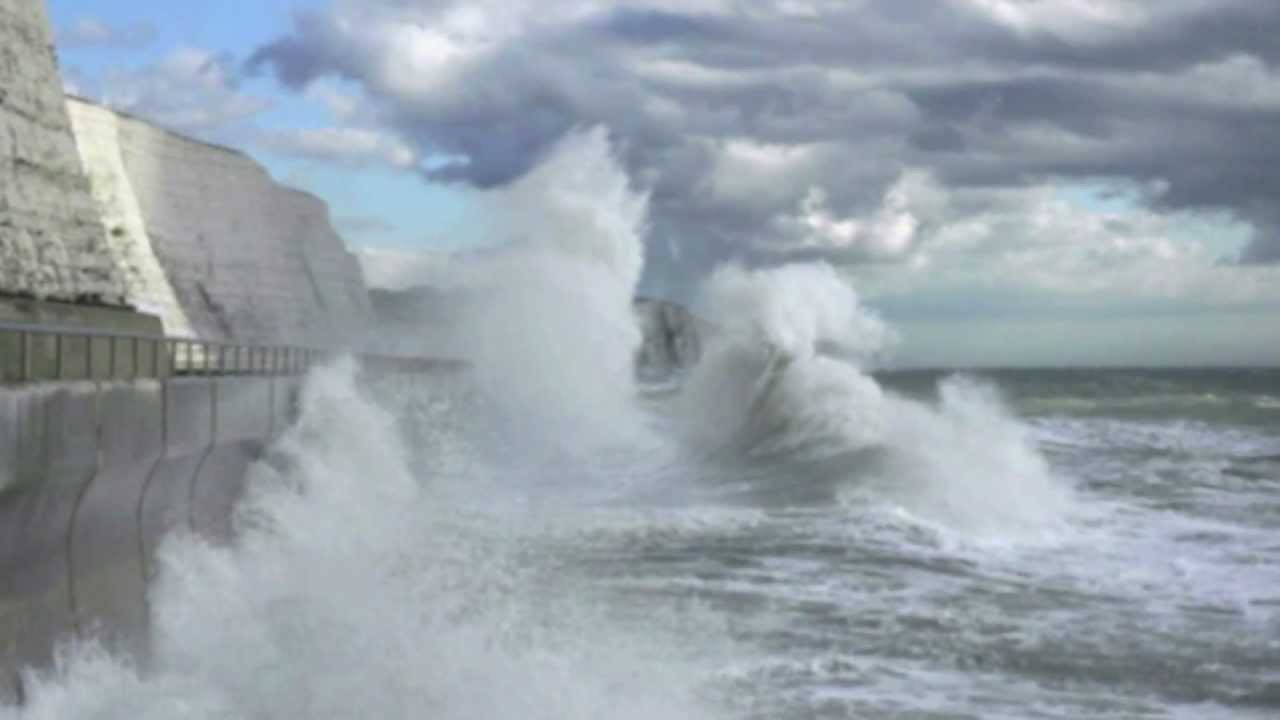Rising Sea Levels: Catastrophe For Coastal Communities

Table of Contents
The Physical Impacts of Rising Sea Levels
Rising sea levels present a significant and multifaceted physical threat to coastal regions. The consequences are far-reaching and affect not only the land itself but also the essential resources upon which coastal communities depend.
Coastal Erosion and Land Loss
Coastal erosion, fueled by rising sea levels, is steadily consuming coastlines around the globe. The increased frequency and intensity of wave action, combined with more powerful storm surges and higher high tides, are accelerating the process of land loss. Areas like the Louisiana coast in the United States, the Mekong Delta in Vietnam, and the Maldives are experiencing significant land loss, with some islands facing complete submersion. The rate of coastal erosion varies depending on factors like sediment supply, coastline geology, and the presence of protective features like mangroves.
- Increased frequency of flooding: Higher sea levels mean that even minor storms can cause significant flooding.
- Loss of habitable land: Entire communities are being forced to relocate as their homes and infrastructure are swallowed by the rising seas.
- Damage to infrastructure: Roads, buildings, and other vital infrastructure are being damaged or destroyed by erosion and flooding.
- Saltwater intrusion into freshwater sources: Rising sea levels contaminate groundwater supplies, making drinking water unsafe and harming agriculture.
Increased Flooding and Storm Surges
Rising sea levels act as a multiplier for the destructive power of high tides and storm surges. Even relatively modest storm surges now reach further inland and cause greater damage than they did in the past. Coastal flooding events are becoming more frequent and intense, leading to widespread devastation of property, infrastructure, and, tragically, human lives. Low-lying coastal areas are particularly vulnerable, with entire towns and cities at risk of being inundated during severe weather events.
- Higher flood levels: Each increment of sea-level rise significantly increases flood heights.
- Longer duration of flooding: Flooding events last longer, causing more prolonged damage and disruption.
- Increased damage from storm surges: Storm surges are amplified by higher sea levels, leading to more severe damage.
- Greater risk to human life and safety: The increased frequency and intensity of flooding pose a significant threat to human life.
Saltwater Intrusion into Freshwater Resources
One of the insidious consequences of rising sea levels is the contamination of freshwater resources. As seawater encroaches further inland, it mixes with groundwater aquifers, rendering them unusable for drinking, agriculture, and industrial purposes. This saltwater intrusion poses a serious threat to human health and food security, particularly in regions already facing water scarcity. The costs associated with treating contaminated water or desalinating seawater can be substantial, placing a significant burden on affected communities.
- Contamination of drinking water supplies: Saltwater intrusion renders groundwater sources unsafe for human consumption.
- Damage to agricultural lands: Saltwater contamination reduces soil fertility, harming crop yields and impacting food production.
- Increased costs of water treatment and desalination: The need to treat contaminated water or desalinate seawater adds to the financial burden on communities.
Socioeconomic Impacts on Coastal Communities
The physical impacts of rising sea levels translate into profound socioeconomic consequences for coastal communities, affecting their livelihoods, economies, and social structures.
Displacement and Migration
Rising sea levels are forcing people to abandon their homes and livelihoods, creating a new category of climate refugees. The displacement of coastal communities presents immense challenges, including finding new homes, securing employment, and adapting to new environments. Mass migration can also lead to social unrest and conflict, as communities compete for resources and opportunities.
- Loss of homes and livelihoods: People lose their homes, businesses, and traditional ways of life.
- Increased poverty and inequality: Displacement exacerbates existing inequalities and leads to increased poverty.
- Social disruption and conflict: Mass migration can lead to social tensions and conflicts over resources.
- Strain on resources in receiving areas: Receiving areas may struggle to cope with the influx of migrants and the increased demand for resources.
Economic Losses and Damage to Infrastructure
The economic costs associated with rising sea levels are staggering. Damage to coastal infrastructure, including ports, roads, and buildings, runs into billions of dollars annually. The tourism industry, a major source of revenue for many coastal communities, is also severely impacted by flooding, erosion, and beach loss. The long-term economic consequences for affected regions can be devastating, leading to job losses, reduced property values, and hindered economic development.
- Reduced property values: Properties in flood-prone areas lose value, impacting the financial well-being of homeowners.
- Damage to tourism industry: Flooding and erosion damage beaches and coastal attractions, reducing tourism revenue.
- Loss of jobs and income: Businesses reliant on coastal resources or tourism are severely affected.
- Increased costs of adaptation and mitigation measures: Communities face high costs to implement measures to protect themselves from rising sea levels.
Threats to Biodiversity and Ecosystems
Coastal ecosystems, such as mangroves, salt marshes, and coral reefs, play a crucial role in protecting coastlines from erosion and storm surges. Rising sea levels threaten these ecosystems, leading to habitat loss, reduced biodiversity, and disruption of vital ecosystem services. The loss of these ecosystems has cascading effects on fisheries, tourism, and overall coastal resilience.
- Habitat loss for marine species: Rising sea levels inundate coastal habitats, displacing marine life.
- Damage to coral reefs: Coral reefs are particularly vulnerable to rising sea levels and ocean acidification.
- Reduced coastal protection from storms: The loss of coastal ecosystems weakens natural defenses against storms and erosion.
- Disruption of fishing industries: Damage to coastal ecosystems affects fish populations and disrupts fishing industries.
Conclusion
The impacts of rising sea levels on coastal communities are profound and far-reaching, affecting the physical environment, economies, and the very lives of millions of people. The urgency of the situation cannot be overstated. From coastal erosion and increased flooding to saltwater intrusion and displacement of populations, the consequences are severe and demand immediate attention.
Understanding the devastating effects of rising sea levels is crucial to protecting our coastal communities. Learn more about the issue and get involved in promoting sustainable practices and advocating for climate action. Let's work together to combat the escalating threat of rising sea levels and build a more resilient future for coastal regions. We must act now to mitigate the effects of climate change and protect vulnerable coastal communities from the devastating consequences of rising sea levels.

Featured Posts
-
 The Crazy Rich Asians Tv Series Henry Goldings Potential Return And Fan Reactions
May 11, 2025
The Crazy Rich Asians Tv Series Henry Goldings Potential Return And Fan Reactions
May 11, 2025 -
 Putins Victory Day Parade Symbolism And Military Capabilities
May 11, 2025
Putins Victory Day Parade Symbolism And Military Capabilities
May 11, 2025 -
 Unlocking Value Ufc 315 Betting Odds And Weekend Predictions
May 11, 2025
Unlocking Value Ufc 315 Betting Odds And Weekend Predictions
May 11, 2025 -
 Remembering A Fallen Hero Fremont Firefighter Honored At National Memorial Weekend
May 11, 2025
Remembering A Fallen Hero Fremont Firefighter Honored At National Memorial Weekend
May 11, 2025 -
 Newark Mayor Barakas Arrest Details Emerge From Ice Protest
May 11, 2025
Newark Mayor Barakas Arrest Details Emerge From Ice Protest
May 11, 2025
